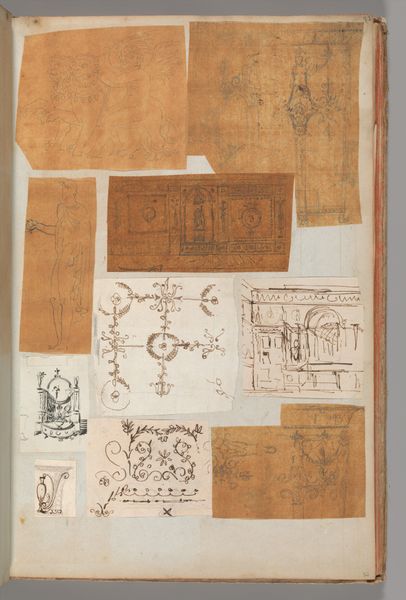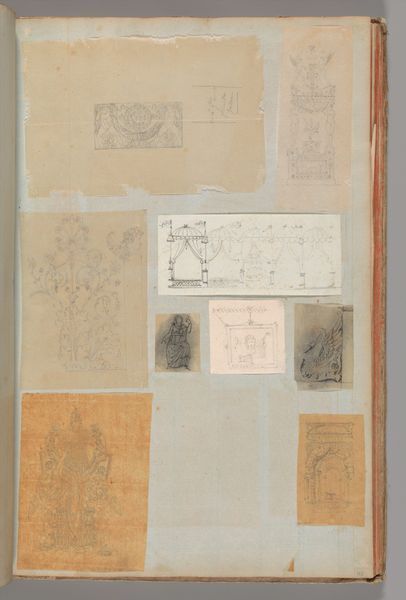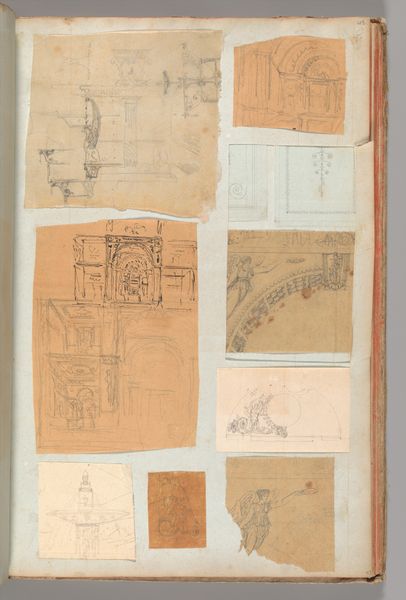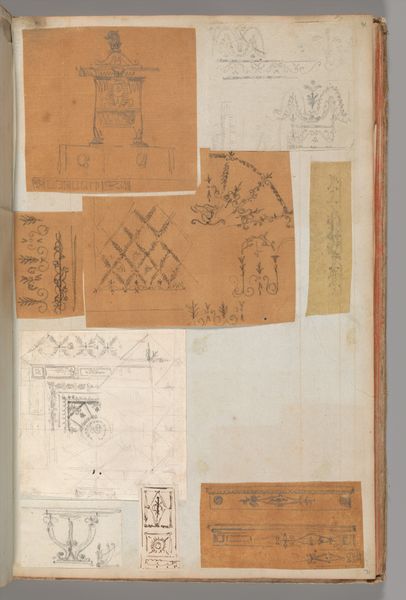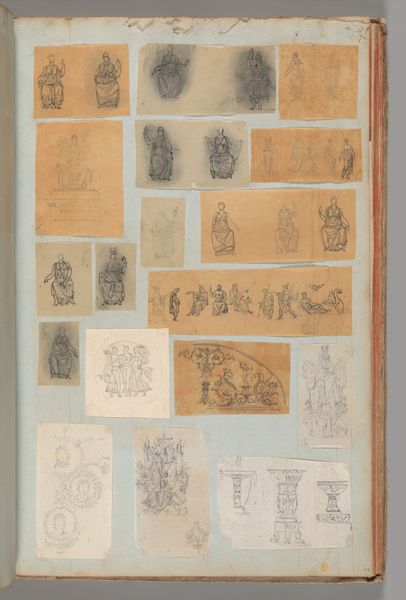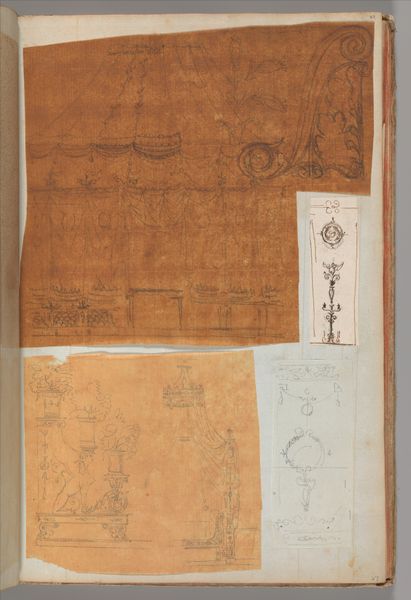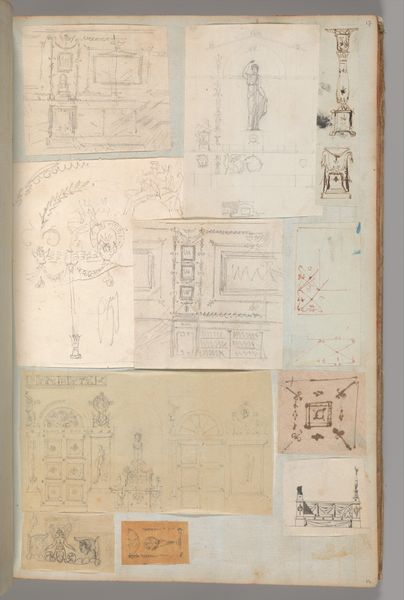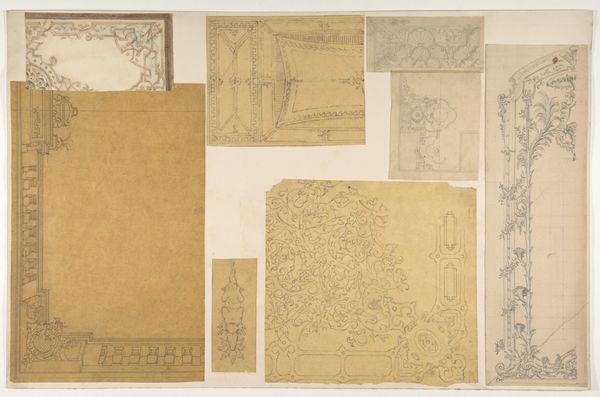
Page from a Scrapbook containing Drawings and Several Prints of Architecture, Interiors, Furniture and Other Objects 1795 - 1805
0:00
0:00
drawing, print, paper, ink, architecture
#
portrait
#
drawing
#
neoclassicism
# print
#
paper
#
ink
#
history-painting
#
academic-art
#
architecture
Dimensions: 15 11/16 x 10 in. (39.8 x 25.4 cm)
Copyright: Public Domain
Curator: Here we have a page from a scrapbook by Charles Percier, dating from 1795 to 1805. It contains drawings and prints of architecture, interiors, furniture, and other objects, a real cabinet of curiosities on paper. Editor: The sheer variety here is quite striking, almost overwhelming. The composition, while seemingly random, does feel intuitively balanced. There’s an engaging rhythm between the dense architectural drawings and lighter, sketchier elements. Curator: Percier was a key figure in the development of the Empire style, and these images certainly speak to the prevailing Neoclassical tastes of the time. The recurring motifs—urns, lyres, geometric forms—reflect a fascination with antiquity and a desire for order and clarity. Editor: Exactly. But look closely at the individual pieces. What materials were he imagining for these designs? Stone, obviously, for the grand architectural pieces, but what about the furniture? The drawings hint at wood, perhaps elaborately carved and inlaid with other costly materials. It all comes down to the actual crafting of these forms. Curator: Agreed. The graphic quality itself evokes certain ideas, if we consider that a precise line speaks to the aspirations for rational design during this era. Percier clearly emphasizes the forms, underlining their classical underpinnings and harmony of proportions. Editor: Beyond their pure aesthetic qualities, these designs represent a very specific type of labor. Someone had to quarry the stone, work the wood, weave the textiles. And that labor often went unacknowledged in the final product. Curator: I understand your point, but I see something celebratory here—a celebration of human ingenuity and the enduring power of classical forms. The designs echo history and create continuity between past and present. Editor: I can respect that. The precision with which Percier captured each design gives insight into the craftspeople’s labour who would work towards producing the items from his vision. Curator: Studying this page of sketches allows us a privileged look into the visual world of the late 18th and early 19th centuries. It is very rare to see such details side by side. Editor: I come away from this considering how design and craft entwine with labor to create objects that signify more than their visual structure lets on.
Comments
No comments
Be the first to comment and join the conversation on the ultimate creative platform.

